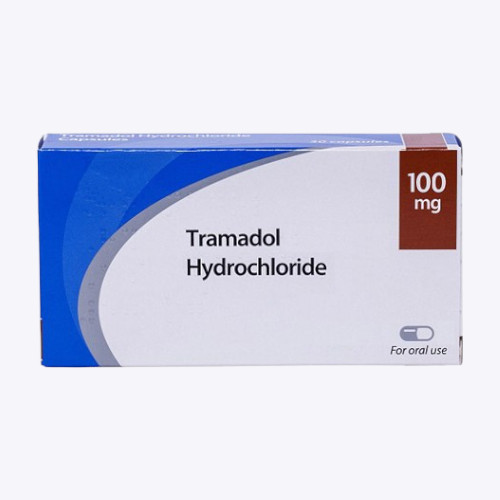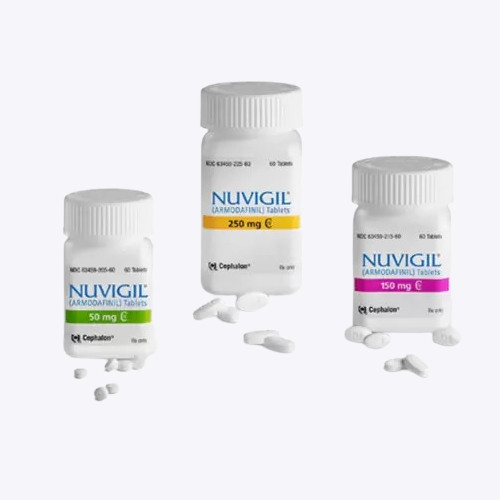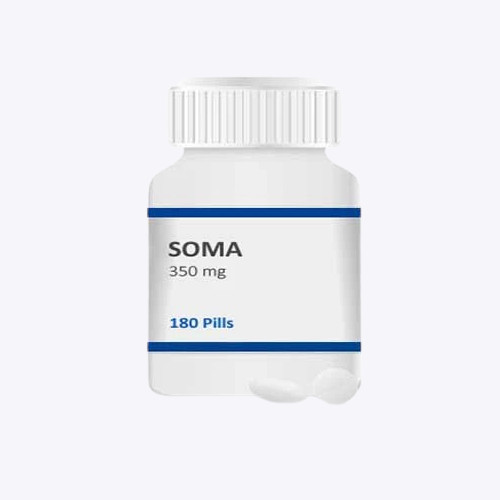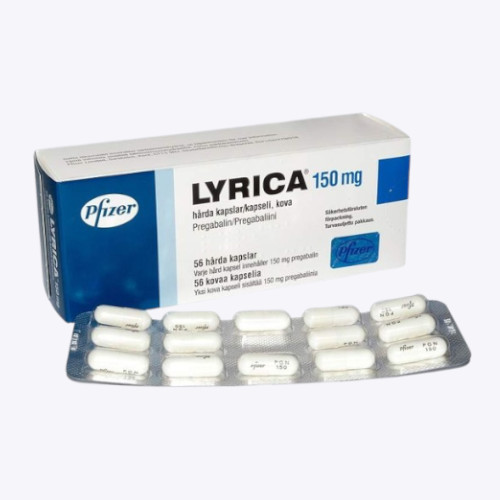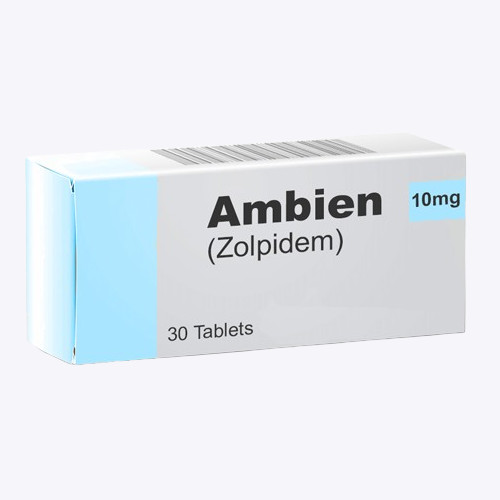Tramadol (Generic Ultram) – USA Domestic
US Domestic3-6 Days DeliveryTramadol is a medication used to treat moderate to moderately severe pain in adults. It is often prescribed for pain management, including post-surgery pain, and can be taken with or without food.
- No Prescription Required
- Guaranteed Delivery
- Ships in 3-6 Business Days
- Directly from the United States
| Quantity | Strength | Price | |
|---|---|---|---|
| 240 tablets | 100 mg | € 548,04 |
Description
What is tramadol?
Tramadol is an opioid agonist that may be used to treat moderate to moderately severe chronic pain in adults.
- Extended-release forms of tramadol may be used in adults who require around-the-clock treatment of their pain for an extended period.
Brands of tramadol include ConZip, Qdolo, Ultram, and Ultram ER. Generic tramadol is available.
Taking tramadol in combination with other pain-relieving medicines such as acetaminophen, ibuprofen, or aspirin can provide better pain relief than just taking one pain-relieving medicine by itself.
A person’s genetics can affect the pain-relieving properties of tramadol.
Tramadol uses
Tramadol is used for the management of moderate to moderately severe pain in adults, including postoperative pain (pain after surgery).
Tramadol treats pain severe enough to require opioids and may be used as an alternative to other forms of pain relief that did not relieve pain well enough or were not tolerated.
Tramadol extended-release capsules may be used by adults who require around-the-clock treatment of their moderate to moderately severe chronic pain for an extended time.
Tramadol should not be used in children younger than 12 years old, or anyone younger than 18 years old with other risk factors (such as breathing problems), or who have recently had surgery to remove their tonsils or adenoids.
- Extended-release tramadol (Ultram ER) should not be given to anyone younger than 18 years.
Is Tramadol an opioid?
Yes, tramadol is an opioid. The opioid activity of tramadol is due to its binding to mu-opioid receptors.
Tramadol side effects
Common side effects
The most common side effects of tramadol are:
- nausea
- constipation
- dry mouth
- drowsiness
- dizziness
- vomiting.
A person’s genetics can affect their response to tramadol, including their risk of side effects.
Serious tramadol side effects and warnings
Tramadol may cause serious side effects, some of which may be fatal.
Tramadol can slow or stop your breathing and may be habit-forming. MISUSE OF THIS MEDICINE CAN CAUSE ADDICTION, OVERDOSE, OR DEATH, especially in a child or other person using the medicine without a prescription. Keep this medicine where others cannot get to it. Do not take more tramadol than prescribed as an overdosage can be fatal. Selling or giving away this medicine is against the law.
- A person caring for you should give naloxone and seek emergency medical attention if you have slow breathing with long pauses, blue-colored lips, or if you find it hard to wake up. Serious breathing problems may be more likely in older adults and people who are debilitated or have wasting syndrome or chronic breathing disorders.
- Call your doctor at once if you have:
- noisy breathing, sighing, shallow breathing, breathing that stops during sleep
- a slow heart rate or weak pulse
- a light-headed feeling, like you might pass out
- seizure (convulsions) or
- low cortisol levels – nausea, vomiting, loss of appetite, dizziness, worsening tiredness or weakness.
Seek medical attention right away if you have symptoms of serotonin syndrome, such as agitation, hallucinations, fever, sweating, shivering, fast heart rate, muscle stiffness, twitching, loss of coordination, nausea, vomiting, or diarrhea.
Seizures have been reported in patients taking tramadol. Your risk of seizures is higher if you are taking higher doses than recommended. Seizure risk is also higher in those with a seizure disorder or those taking certain antidepressants or opioid medications.
You should not take tramadol if you have severe breathing problems, a head injury or increased pressure inside your skull, a blockage in your stomach or intestines, or if you have recently used alcohol, sedatives, tranquilizers, narcotic medication, or an MAO inhibitor (isocarboxazid, linezolid, methylene blue injection, phenelzine, rasagiline, selegiline, tranylcypromine, and others). Tramadol should not be used if you are suicidal or prone to addiction.
Fatal side effects can occur if you use this medicine with alcohol, or with other drugs that cause drowsiness or slow your breathing. People taking extended-release forms of tramadol should not consume alcohol-containing beverages at the same time. Alcohol is also not advised with immediate-release forms of tramadol.
Serious allergic reactions, including anaphylaxis, have occurred with tramadol, some of which caused death. People who are allergic to other opioids are at higher risk. Other hypersensitivity reactions include itching, hives, narrowing of the airways, swelling of the face and airways (angioedema), and serious skin reactions such as Stevens-Johnson Syndrome. Get emergency medical help if you have signs of an allergic reaction to tramadol (symptoms include hives, difficulty breathing, swelling in your face or throat) or a severe skin reaction (fever, sore throat, burning in your eyes, skin pain, a red or purple skin rash that spreads and causes blistering and peeling).
Tramadol hydrochloride extended-release capsules/tablets may complicate a healthcare provider’s clinical assessment of an acute abdominal condition. They should also not be used by people with liver or kidney disease.
Taking tramadol during pregnancy may cause life-threatening withdrawal symptoms in the newborn.
Tramadol should not be given to a child younger than 12 years old, or anyone younger than 18 years old who recently had surgery to remove the tonsils or adenoids. Extended-release tramadol (Ultram ER) should not be given to anyone younger than 18 years.
Tramadol may cause drowsiness or affect your ability to drive or perform hazardous tasks. Do not perform these tasks if tramadol causes confusion, mental impairment, or drowsiness.
Tramadol can cause withdrawal symptoms if stopped suddenly after being taken for a long period of time. Symptoms may include restlessness, drug craving, anxiety, and sweating.
This is not a complete list of side effects and others may occur. Call your doctor for medical advice about side effects. You may report side effects to the FDA at 1-800-FDA-1088.
Before taking this medicine
You should not take tramadol if you are allergic to it, or if you have:
- severe asthma or breathing problems
- a stomach or bowel obstruction (including paralytic ileus)
- if you have recently used alcohol, sedatives, tranquilizers, or narcotic medications or
- if you have used an MAO inhibitor in the past 14 days (such as isocarboxazid, linezolid, methylene blue injection, phenelzine, or tranylcypromine)
- are pregnant or planning a pregnancy
- are breastfeeding.
Tramadol should not be given to a child younger than 12 years old. Ultram ER should not be given to anyone younger than 18 years old. Do not give tramadol to anyone younger than 18 years old who recently had surgery to remove the tonsils or adenoids.
Seizures have occurred in some people taking tramadol. Your seizure risk may be higher if you have ever had:
- a head injury, epilepsy, or other seizure disorder
- drug or alcohol addiction or
- a metabolic disorder.
To make sure tramadol is safe for you, tell your doctor if you have ever had:
- breathing problems, sleep apnea
- liver or kidney disease
- urination problems
- problems with your gallbladder, pancreas, or thyroid
- a stomach disorder or
- mental illness, or suicide attempt.
Pregnancy
If you take tramadol during pregnancy, your baby could be born with life-threatening withdrawal symptoms or seizures and may need medical treatment for several weeks. Fetal death and miscarriage have also been reported. Should not be used in pregnant women unless the benefits outweigh the risks.
Breastfeeding
It is not known if tramadol passes into human milk. Ask a doctor before using tramadol if you are breastfeeding. Tell your doctor if you notice severe drowsiness or slow breathing in the nursing baby.
How should I take tramadol?
Take tramadol exactly as prescribed by your doctor. Never use tramadol in larger amounts, or for longer than prescribed. Tell your doctor if you feel an increased urge to take more of this medicine.
- Swallow the capsule or tablet whole to avoid exposure to a potentially fatal overdose. Do not crush, chew, break, open, or dissolve.
- Never crush or break a tramadol tablet to inhale the powder or mix it into a liquid to inject the drug into your vein. This practice has resulted in death.
- May be taken with or without food.
- Measure the liquid medicine with the supplied syringe or a dose-measuring device (not a kitchen spoon).
You may have withdrawal symptoms if you stop using tramadol suddenly. Ask your doctor before stopping the medicine.
Do not keep leftover tramadol. Just one dose can cause death if someone uses it accidentally or improperly. Ask your pharmacist where to locate a drug take-back disposal program. If there is no take-back program, mix the leftover medicine with cat litter or coffee grounds in a sealed plastic bag and throw the bag in the trash.
Usual adult tramadol dosage
Immediate-release formulations (tablets/capsules/liquid)
- Tramadol 50 mg to 100 mg every 4 to 6 hours as needed. Maximum dose 400 mg/day.
- A lower starting dose of 25 mg once a day, slowly increasing by 25mg every 3 days as needed.
Extended-release capsules/tablets
- Tramadol ER 100 mg once a day.
- Can be increased by 100 mg every 5 days if needed to a maximum dose of 300 mg/day.
What happens if I miss a dose?
Since tramadol is used for pain, you are unlikely to miss a dose. Skip any missed dose if it is almost time for your next dose. Do not use two doses at one time.
What happens if I overdose?
Seek emergency medical attention or call the Poison Help line at 1-800-222-1222. An overdose can be fatal, especially in a child or other person using the medicine without a prescription. Overdose symptoms may include severe drowsiness, pinpoint pupils, slow breathing, or no breathing.
Your doctor may recommend you get naloxone (a medicine to reverse an opioid overdose) and keep it with you at all times. A person caring for you can give naloxone if you stop breathing or don’t wake up. Your caregiver must still get emergency medical help and may need to perform CPR (cardiopulmonary resuscitation) on you while waiting for help to arrive.
Anyone can buy naloxone from a pharmacy or local health department. Make sure any person caring for you knows where you keep naloxone and how to use it.
What should I avoid while taking tramadol?
Do not drink alcohol. Dangerous side effects or death could occur.
Avoid driving or hazardous activity until you know how tramadol will affect you. Dizziness or drowsiness can cause falls, accidents, or severe injuries.
What other drugs will affect tramadol?
You may have breathing problems or withdrawal symptoms if you start or stop taking certain other medicines. Tell your doctor if you also use an antibiotic, antifungal medication, heart or blood pressure medication, seizure medication, or medicine to treat HIV or hepatitis C.
Many other drugs can be dangerous when used with tramadol. Tell your doctor if you also use:
- medicine for allergies, asthma, blood pressure, motion sickness, irritable bowel, or overactive bladder
- other opioid medicines
- a benzodiazepine sedative like Valium, Klonopin, or Xanax
- sleep medicine, muscle relaxers, or other drugs that make you drowsy, or
- drugs that affect serotonin, such as antidepressants, stimulants, or medicine for migraines or Parkinson’s disease.
This list is not complete. Other drugs may interact with tramadol, including prescription and over-the-counter medicines, vitamins, and herbal products. Not all possible interactions are listed here.
Storage
Store at room temperature away from moisture and heat and out of reach of children. Do not share with others.
Additional information
| Composition | Tramadol |
|---|---|
| Quantity | 240 tablets |
| Strength | 100 mg |
| Form | Tablets |
| Brand Name | Takem |
| Also Known As | Ultram |
